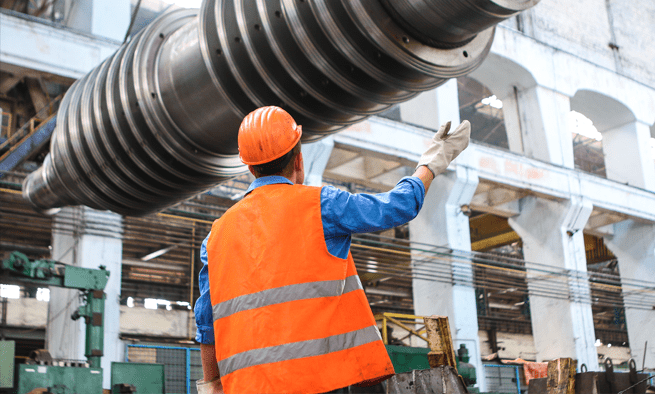
Summer weather brings more than sweat and sunburns—it increases the risk of chemical exposure for outdoor workers. As temperatures climb, so do the hazards on job sites, especially when it comes to hot weather chemical detection. Construction managers, EHS professionals, and safety officers must plan proactively to protect their teams from heat-related chemical dangers.
How Heat Amplifies Chemical Risk
Most people think of dehydration and heat exhaustion as the biggest threats in hot weather—but heat also intensifies chemical hazards.
High temperatures accelerate the volatilization of chemicals, meaning liquids evaporate faster and release more vapors into the air. For outdoor work environments that already handle substances like ammonia, formaldehyde, hydrogen sulfide, or chlorine, the risk of inhalation or surface exposure increases significantly.
Even small leaks or trace amounts of chemical off-gassing can become more hazardous under summer sun. Combined with heavy breathing from physical exertion, sweat compromising PPE seals, and long hours under the sun, the potential for exposure grows quickly. That’s why hot weather chemical detection should be a part of every seasonal safety strategy.
The Cost of Inaction: Real-World Impacts
Unchecked chemical exposure can lead to:
- Respiratory irritation and long-term lung damage
- Skin burns or sensitization
- Reduced worker performance due to illness or fatigue
- Regulatory non-compliance and potential fines
- Lost time and productivity due to heat-related illness or exposure events
In industries where compliance and safety are non-negotiable, overlooking hot weather chemical detection simply isn’t an option.
A Reliable Solution: SafeAir® and ChromAir® Chemical Detection Badges
When it comes to managing airborne chemical risks in the heat, Morphix Technologies’ SafeAir and ChromAir badges are an ideal addition to any PPE protocol.
These passive, wearable badges are uniquely suited to harsh environments. They require no batteries or calibration and provide visual, time-sensitive color changes when specific chemicals are present—making them perfect for:
- Construction zones
- Utility and infrastructure projects
- Oil and gas fields
- Disaster response or cleanup efforts
- Any jobsite with limited shade or environmental control
Why They’re Ideal for Hot Weather Work:
✅ Heat-resilient design – Built to withstand high temperatures without reactivity or indicator visibility
✅ Real-time exposure tracking – Workers and supervisors can monitor exposure throughout the shift
✅ No tech required – No need for power, extensive training, or data downloads—just immediate, easy-to-interpret, visual feedback
✅ Easy to integrate – Clip to clothing or gear for full-shift use
Whether you’re managing a construction crew or overseeing safety at a remote worksite, these badges make hot weather chemical detection simple and reliable.
Best Practices for Outdoor Chemical Safety in Hot Weather
Summer months require a proactive and adaptable safety strategy. Here’s how to keep your teams protected:
1. Conduct Seasonal Risk Assessments
Identify which chemicals are more volatile in heat and adjust monitoring protocols accordingly. This includes not just primary jobsite substances but also byproducts or cleaners that may react to high temperatures.
2. Equip Workers with Chemical Detection Badges
Use SafeAir or ChromAir badges to ensure workers have continuous, passive hot weather chemical detection. Consider a rotation system to ensure fresh badges are distributed each day or when workers move between zones.
3. Promote Hydration and PPE-Friendly Cooling
Hydration isn’t just for heat stroke prevention—it also helps workers tolerate PPE better and maintain alertness. Set up shaded rest stations and offer PPE-compatible cooling gear like neck wraps or vented vests.
4. Train for Summer-Specific Scenarios
Teach crews to recognize both the symptoms of heat-related illness and chemical exposure. Emphasize that symptoms can overlap (e.g., dizziness, nausea, headaches) and encourage immediate reporting of any changes in how they feel.
Don’t Let the Heat Catch You Off Guard
Hot weather changes the game for workplace safety. And while the heat itself is unavoidable, exposure to harmful chemicals can be mitigated with the right tools and planning.
Morphix’s SafeAir and ChromAir badges provide a cost-effective, low-effort solution for hot weather chemical detection. When combined with hydration, training, and smart scheduling, these detection badges help ensure every worker makes it home safely—even on the hottest days.
Want to See the Badges in Action?
Contact Morphix Technologies today to request more information or visit our product pages to learn how SafeAir and ChromAir badges can support your warm-weather safety strategy.
BY PHONE: +1-757-431-2260
E-MAIL: sales@morphtec.com
For customers outside the US, email or call to be referred to a distributor.
Available on Amazon (for US customers)
Available on GSA (for US government customers)
GS-07F-0147T (Laurus Systems, Inc.)